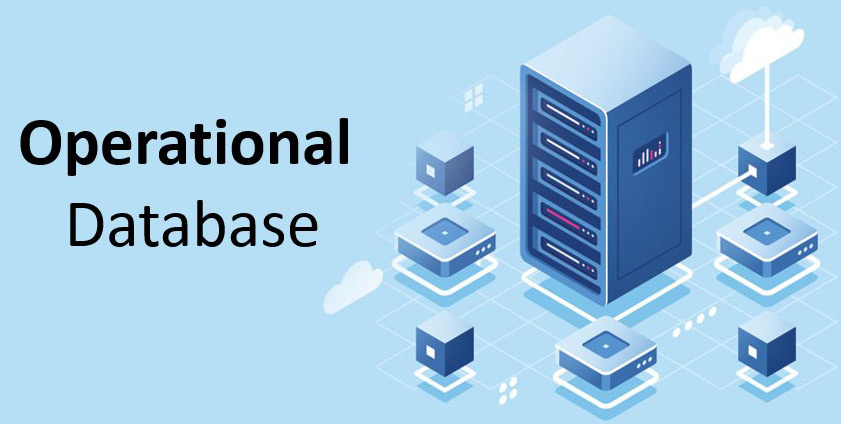
The data management and architecture industry has been seeing a fair share of changes from big and lean data to more specific models for databases. Currently, there are countless database models that help process data quicker and offer more efficiency than others.
Amongst the numerous database models, there are Operational Databases that are also known as On-Line Transaction Processing (OLTP) databases. There are some great benefits to using this data management technology for some industries, which is why it is gaining traction. Learn more about Operational Databases.
Table of Contents
Applications of Operational Databases
Operational Databases (OBDs) help power applications such as e-commerce sites, survey web apps and so forth. One of the key benefits of an operational data store is that transmitting data happens in real-time. This means the data stored in an operational database is not historical or archived. Instead, it is live and can be edited while the application and database is in use.
That makes it easier for such web applications to function efficiently without any unnecessary delay. The operational database architecture can also be used to power real-time analytics software, which could include BI tools. Real-time data has become very crucial in guiding business decisions and such insights are invaluable to the BI industry. Hence, more BI tools have been using ODBs to power their systems.
Which query language is best for ODBs
For decades, only one main query language was used more often than other seemingly inferior contemporaries. Most databases have been using this query language called SQL and it is still very much in operation today. Some ODB solutions use SQL as their main query language, but it is slowly going out of operation in such data architecture.
Most recently, a less structured query language has started taking over the ODB field and it is called NoSQL. This language allows the applications to access, edit, delete and add data in real-time much quicker than SQL can. At the same time, NoSQL-powered databases boast data consistency and scalability to a greater level. There are other query languages that are making their entry that are also suitable for ODB solutions and they also support unstructured data.
ODB Architecture and characteristics
One of the most common characteristics of ODBs is the dynamic approach to making data available in real-time. Most databases focus on storing and archiving data and that slows down the apps which need it rapidly. As a result, more layers of data access have to be added to try and hasten the process.
ODB allows applications to have rapid direct access to the data and even allows users to edit it with changes reflecting in real-time. As such, ODBs can be contrasted with data warehouses that stockpile data and archive them for future references. Editing data stores in warehouses makes it harder to edit details as time goes, which is why ODBs are the perfect fit for dynamic applications. The architecture of this database model is not based on data access layers that need to be implemented for quicker access. Instead, this kind of database can directly interact with application APIs without slowing the system down.
Relation between ODBs and Distributed Databases
Since the main focus of operational databases seems to be expediency, it might seem impossible for ODBs to integrate well with distributed databases. Since distributed databases use a disparate hardware system, it might seem possible that this architecture could slow applications. Trying to implement effective database management in industries that depend on big data lakes does need some flexibility and scalability. Currently, Distributed Databases offer this flexibility and scalability and thus are being equally used and ODBs.
Interestingly, these two database architectures are finding a way to coexist and support one another. To offer expediency and greater scalability, some organizations are using these solutions to solve their data problems. Such integration provides higher availability and much better scale out ability through the use of consistent replication. With the advent of such integrations, legacy databases could soon be out of business because of their slower architecture.
Database models supported by ODB
In addition to supporting Distributed Databases, numerous other database models are supported by ODBs. What drives these integrations are mainly the different applications and solutions that are being built. Some database models were integrated to develop customized solutions that later became commercial. For example, projects such as Aerospike and Apache Cassandra were developed to provide key-value store solutions.
These database models support NoSQL use and also contribute to the overall goal of expediency and accuracy. On the other hand, some database models support SQL as the query language. Such examples include EnterpriseDB, which is a relational database that manages tabular data. MongoDB is also supported by the ODB database model for expedited relevant applications.
Benefits of using Operational Databases
Operational Databases are very versatile, scalable and offer flexible solutions to application developers. They can be integrated with a wide range of database models to offer real-time data and this helps improve the overall performance of these apps. Each use case has its own benefits but using it in the analytical field can help boost key decision-makers by offering valid business insights in a timely manner.
Also, operational databases offer versatility in terms of choosing the most suitable query language. You can use SQL, NoSQL, NewSQL as the scripting language effectively. Despite its dynamic nature, it does not lose the state of the data even when scaling out and when it’s being used in complex systems.
Closing thoughts
Operational databases have great benefits such as flexibility and easy integration with other database models and so forth. This type of database model can also help analytical tools such as Business Intelligence tools have access to real-time insights and guide good decision making. Also, the real-life applications of ODBs span out across a wide range of fields such as e-commerce, data collection, and even the analytics fields. Lastly, you can use a wide variety of query languages on Operational Databases.


